aircraft
Latest

Boeing’s autonomous fighter jet could arrive next year
Boeing has unveiled an autonomous fighter jet which is expected to take to the skies in 2020. The aircraft is designed to fly alongside crewed jets during combat, performing early warning tests, intelligence gathering, surveillance and reconnaissance.
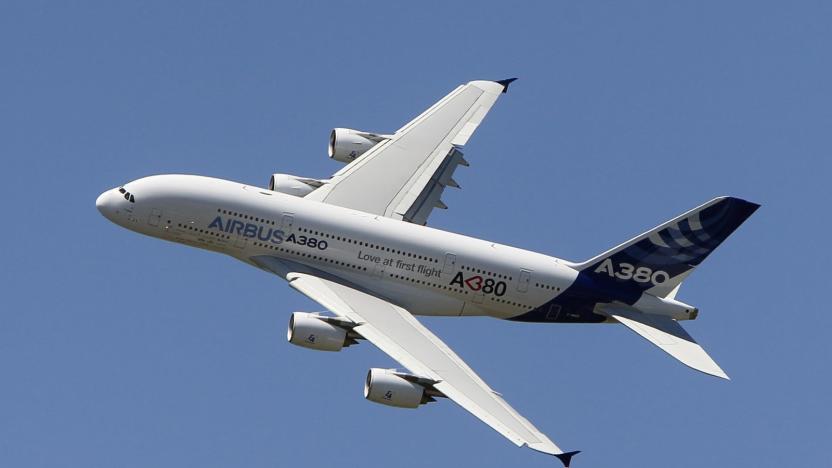
Airbus ends production of its A380 superjumbo
Airbus will soon end production of the A380 superjumbo, the largest passenger plane to ever fly. It's capable of hauling up to 850 people and flyers love it, especially those who can afford the amazing first class seats and private cabins. However, airlines were less enthralled, and orders have been tapering off for years. The final straw came when the A380's best cutomer, Emirates, cut an order for the planes, forcing Airbus to admit in a statement that there was "no basis to sustain production."

Iridium's 'truly global' satellite internet connects aircraft and ships
Wondering what Iridium would be doing with those Next satellites that SpaceX just finished launching? You now have an idea. Iridium has formally debuted Certus, a "truly global" satellite broadband service that promises to keep aircraft, ships and other vehicles (including self-driving vehicles) connected even in the remotest places. It's far from fast at 352Kbps for both downloads and uploads, but that's enough to keep crews online and provide reasonably high-quality voice services.

World's longest aircraft retires to make way for production models
The world's longest aircraft has been sidelined... although that's not necessarily a bad thing. Hybrid Air Vehicles has decided against rebuilding its record-setting Airlander 10 prototype. The company will instead use its resources to create the "first batch" of production-grade Airlander 10s, CEO Stephen McGlennan said. The experimental vehicle provided the data necessary for future development, the executive added, leaving no reason to put it back in the skies.

Take a look at Bell and Uber's flying taxi of the future
While Elon Musk's Boring Company hopes to ease traffic congestion by burrowing under the cities of tomorrow, Uber and Bell Aerospace are taking to the skies. At CES 2019 in Las Vegas, Bell revealed the latest iteration of its Nexus VTOL aircraft, which is being developed as the preferred platform for Uber's Elevate air taxi program.
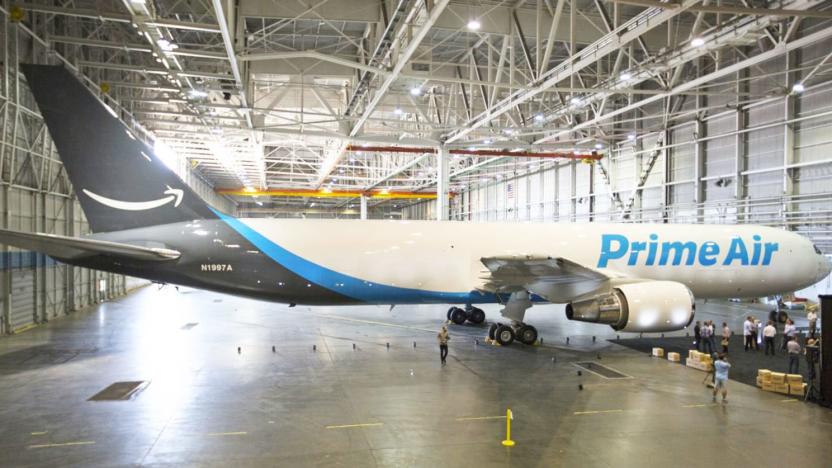
Amazon expands its airborne shipping fleet to 50 planes
Amazon's famous drones have yet to deliver much of anything, but its jets are a different story. After launching Prime Air in 2016 with 40 jets, the company appears to have renamed it "Amazon Air" and added 10 more Boeing 767-300 cargo aircraft. It now flies Amazon Air out of 20 different gateway airports "making two-day shipping possible almost anywhere in the US," the company said.
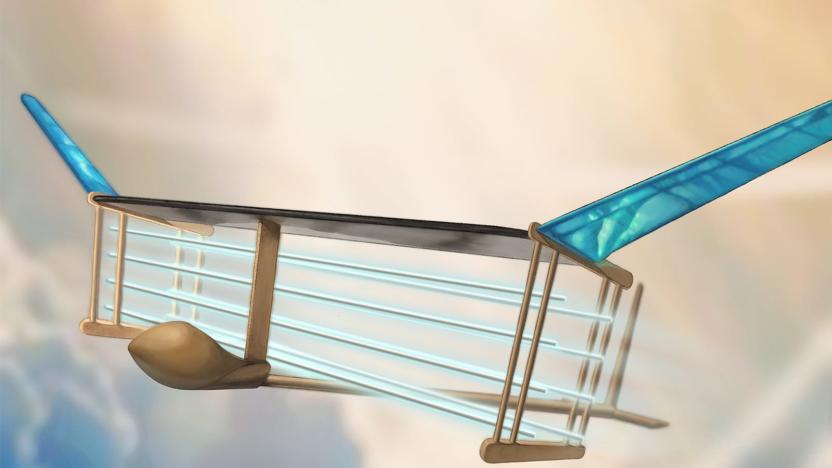
Ion-powered aircraft flies with no moving parts
As clean as electric aircraft can be, there's still one kind of pollution they still produce: noise. Even that might go away before long, though. MIT researchers have successfully flown an ionic wind-powered aircraft that doesn't use any moving parts. The 16-foot wide machine stays aloft by charging wires with a high enough voltage (40,000V) that they strip negatively-charged electrons from air molecules, which are promptly attracted to negative electrodes at the back of the aircraft. The collisions from that newly-formed ionic wind create the thrust needed to keep the vehicle airborne.

Virgin to use eco-friendly jet fuel on commercial flight this October
Virgin Atlantic is about conduct a real-world test of its greener jet fuel. The airline plans to use LanzaTech's sustainable fuel for the first time in a commercial flight this October, with a Boeing 747 relying on the low-carbon liquid for a trip from Orlando to London's Gatwick airport. The journey will both "raise awareness" for the more environmentally friendly technology and show that it's viable for more than just experimental flights.

MIT finds a way for submarines to talk directly to airplanes
Submarines can't normally communicate directly with anything above the water due to the physical limits of their signal, but that might change in the near future. Researchers have developed a wireless system that can transmit data from an underwater source to the air. The approach, known as translational acoustic-RF communication (TARF), sends a sonar signal to the surface, where tiny vibrations at different frequencies correspond to the 0s and 1s of binary data. Above the water, an extremely high frequency radar (30GHz to 300GHz) can pick up on minuscule changes in signal angles that relate to the data bits. It's just a matter of processing the bits into meaningful data after that.
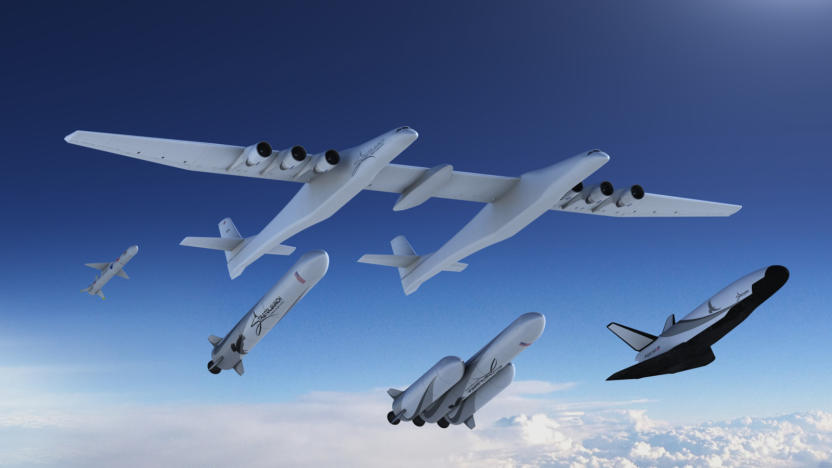
Stratolaunch's new satellite carriers include a reusable space plane
Paul Allen's Stratolaunch is only just starting to make serious progress on its massive aircraft, but it's already thinking about its future beyond that enormous machine. The company has unveiled a new family of launch vehicles that can carry a wide range of payloads to orbit. Most notably, it's in the "design study" phase for a completely reusable space plane (shown at far right). Stratolaunch won't even predict when the machine would be ready, but it would initially focus on cargo launches and carry crew in later revisions.

Terrafugia's first flying car should finally go on sale in 2019
Terrafugia's Transition flying car has been in development purgatory for years, but it's finally here... almost. The company has announced that the first production models of the Transition will go on sale sometime in 2019. While that does sound like a long way off, it does provide a more concrete release window than you've had in the past. And if it's any consolation, the finished machine will have some useful improvements in return for the extra months of waiting.
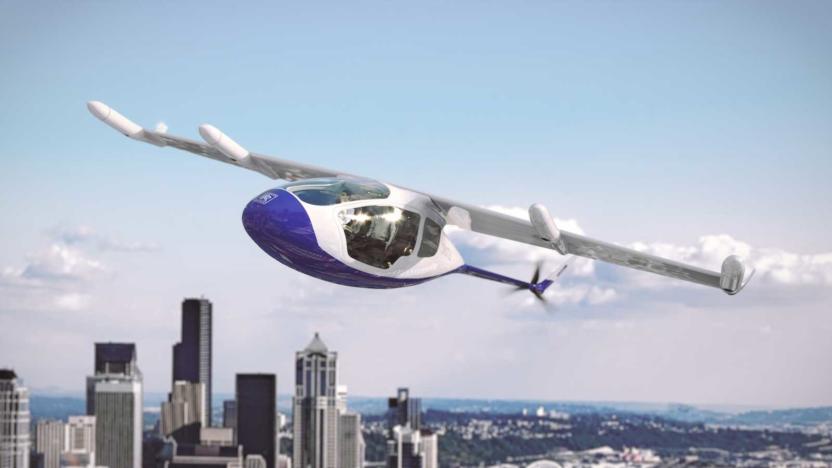
Rolls-Royce is the latest to develop a flying taxi
The flying taxis from Airbus and Uber may have some fresh competition, albeit not quite in the way they might have expected. Rolls-Royce has unveiled an EVTOL (Electric Vertical Take Off and Landing) concept that could carry four to five passengers to virtually any large-enough landing spot thanks to wings that can rotate 90 degrees. It wouldn't be purely electric, despite the name (gas turbines would produce the 500kW of power needed for six propellers), but it would be quiet while ferrying people up to 500 miles at a peak speed of 250MPH. Its wing propellers would fold away once at cruise height to avoid irking either passengers or people below.

NASA will publicly test quiet supersonic technology in November
You won't have to wonder what NASA's quiet supersonic technology sounds like in person -- if you live in the right part of Texas, that is. The administration plans to conduct a series of public tests around the coastal city of Galveston in November. The F/A-18 Hornet aircraft at the heart of the tests will perform dive maneuvers that produce louder sonic booms out at sea, while quieter sonic "thumps" will take place over Galveston proper. After that, "at least" 500 local volunteers will provide feedback on what they heard, while audio sensors will provide more definitive noise readings.
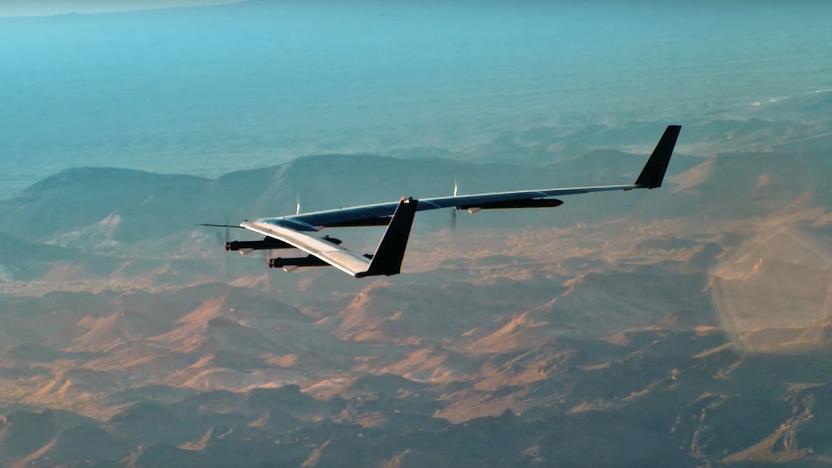
Facebook pulls the plug on its Aquila internet drone
You'll want to say goodbye to dreams of Facebook-made internet drones. The company will stop designing and manufacturing its own aircraft, and is closing the relevant facility in the British town of Bridgwater. According to Facebook, it's not necessary when "leading companies" in aerospace have been designing their own high-altitude flying machines. Instead, the social network can focus on developing the high-altitude internet access systems and work with partners to both develop the connectivity itself and put it in the skies. This includes policies (such as a proposal for more spectrum at a 2019 conference) and rule-making committees.

NASA's aircraft modifications make planes 70 percent quieter
While NASA's research often makes headlines for advancements that could facilitate space exploration -- like, say, more portable nuclear reactors or X-ray navigation -- it also looks into tech to help us here on Earth, too. The agency just completed a series of flights testing out new airframe components that could reduce the noise they generate when landing by over 70 percent. That could mean quieter airports and happier communities surrounding them, and consequently fewer noise complaints to the FAA.

Germany plans to test Airbus and Audi's flying taxi concept
The Pop.Up Next flying taxi from Airbus and Audi should soon become much more than a well-meaning concept. The German government has signed a letter of intent greenlighting tests for the flying taxi around Audi's home city of Ingolstadt. Transport Minister Andreas Scheuer saw the autonomous, mixed-mode transports bringing a "new dimension of mobility" and creating a "huge opportunity" for companies exploring flying car tech.
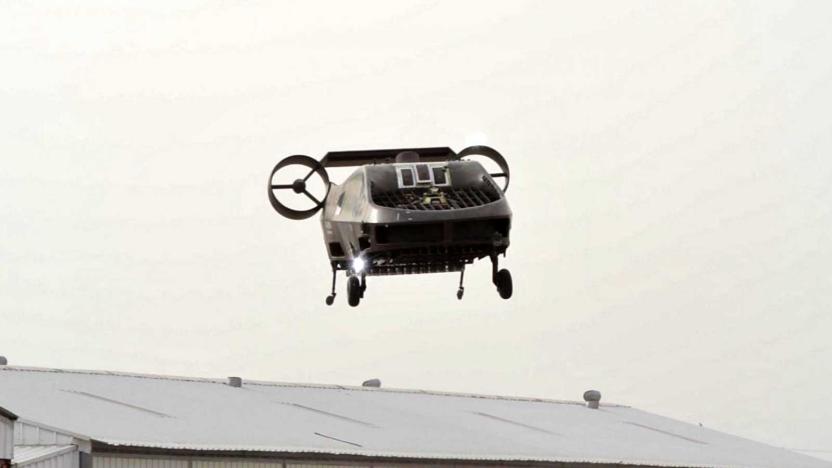
Watch a medevac drone perform a simulated rescue
Medevac missions won't have to put more humans in danger if Tactical Robotics has its way. The Urban Aeronautics-owned firm has successfully completed its first "mission representative" demo of the Cormorant, an autonomous VTOL (vertical takeoff and landing) drone that can pick up two casualties without requiring a crew. The only people directly involved are those loading the victims -- there's a video camera for talking to conscious patients, but the machine otherwise flies on its own.

FedEx will use smart glasses to help pilots land in emergencies
Smoke is understandably a serious danger for aircraft, and not just in life-threatening situations -- the FAA notes that there's typically one smoke-related landing per day. But how does the pilot land with a smoke-filled cockpit where they might not even see the instrument cluster, let alone the outside world? FedEx and the Osterhout Design Group have an idea. They're showing off SAVED (Smoke Assured Vision Enhanced Display -- yes, it's a forced acronym), a hybrid smart glasses and oxygen mask system that provides data from the aircraft's HUD and external cameras to help with emergency landings. Pilots won't have to fly blind or risk passing out just to avoid a disaster.

NASA explores ‘quiet’ supersonic flight over land
Today, NASA announced its latest X-plane experimental aircraft called the Low-Boom Flight Demonstrator (LBFD). The agency signed a contract to design the plane back in 2016; now it's ready to proceed with development and construction. If the LBFD is successful, it will be a testbed for quiet supersonic technology, and possibly allow for supersonic flights over land, getting passengers from New York to Los Angeles in just two hours.
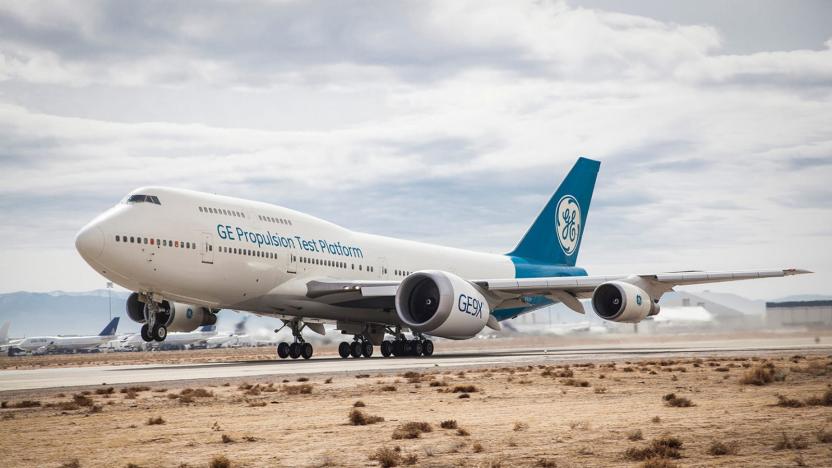
GE test-flies the world's largest jet engine
Airliners are growing ever bigger to haul more people per flight, which means they need appropriately massive engines -- and GE Aviation is happy to oblige. It recently conducted the first test flight of the GE9X, widely billed as the world's largest jet engine. It's easy to believe the claim from a glimpse (it's as wide as a Boeing 737), but the specs back it up as well: it has a whopping 11.2ft diameter front fan that, combined with carbon fiber blades, a next-gen high-pressure compressor and a new combustor, puts out over 100,000 pounds of thrust. For comparison, some of the earliest GE90 engines aboard Boeing 777s kicked out 'just' 74,000 pounds.





